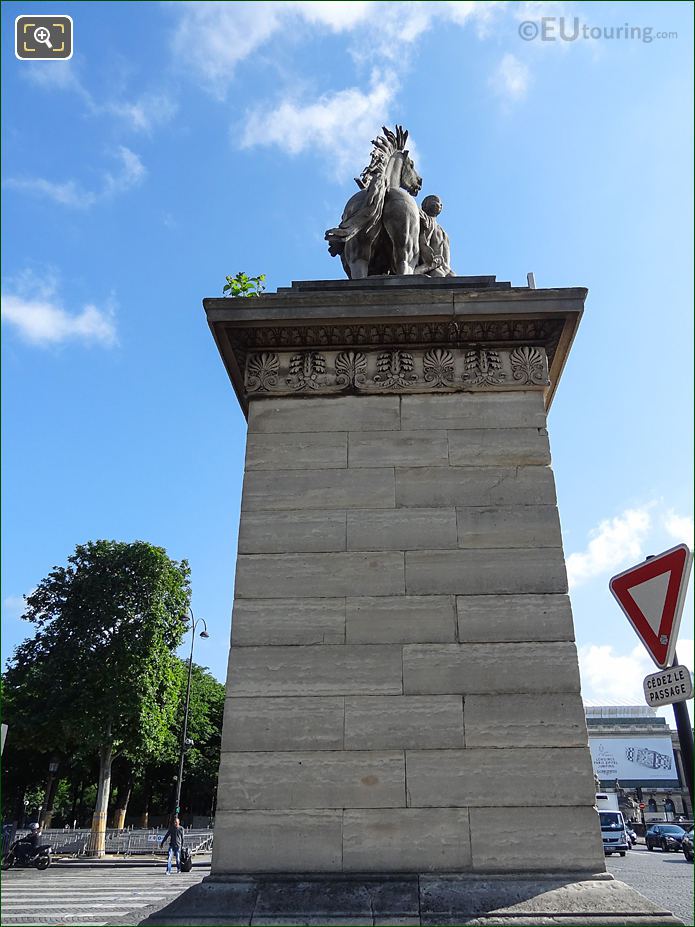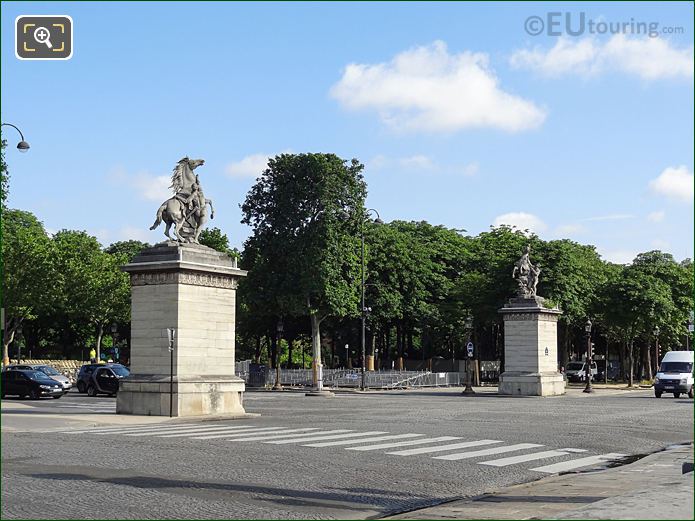HD photographs of Horse of Marly statue at Place de la Concorde north side - Page 1045
While we were in the 8th Arrondissement of Paris in between the Place de la Concorde and the entrance to the Avenue des Champs-Elysees, we took these high definition photos showing one of two statues called Cheval retenu par un palefrenier known as Cheval de Marly or Horses of Marly, which were sculpted by Guillaume Coustou.
Paris Statues
- << Previous 1041 1042 1043 1044 1045 1046 1047 1048 1049 1050 Next >>
This first HD photo shows an impressive statue positioned on the top of a tall pedestal entitled Cheval retenu par un palefrenier, which in English translates to Horse retained by a groom, although this and the other one you will see later are also referred to as the Cheval de Marly or Chevaux de Marly, being the Horse of Marly or Horses of Marly, due to the fact that they were commissioned for the park of the Chateau de Marly.
Originally, by the watering hole at the entrance to the park of the Chateau de Marly there were two equestrian groups by Antoine Coysevox, which were removed and placed at the entrance to the Jardin des Tuileries, so in 1739 King Louis XV commissioned the sculptor Guillaume Coustou to produce two new statue groups as replacements, with specific models being chosen and approved by the king in 1743, and some of the detailing can be seen in this close up photograph.
However, Guillaume Coustou, known as Guillaume Coustou the Elder (1677 - 1746) was becoming too ill to continue working on the Horses of Marly, so he entrusted his son also named Gullaume Coustou, yet known as Guillaume Coustou the Younger (1716- 1777), to complete these equestrian groups in Carrara marble, that were sculpted in just two years and were a major technical breakthrough in working with monolith blocks of marble, which were installed at the Chateau de Marly in 1745.

Now here you can see the back of a Cheval de Marly, which stands at a height of 3.4 metres and a length of 2.84 metres, and this faces the other equestrian group also known as the Cheval retenu par un palefrenier, but not in their original location, as they were transferred to the entrance of Avenue des Champs-Elysees in 1794 between this street and the Place de la Concorde, yet these were restored by Louis-Denis Callouette in 1840.
Instead of a mythical theme such as the winged horse Pegasus, a more traditional and factual composition was sculpted from the monolith blocks in Carrera marble as you can see here with the Cheval retenu par un palefrenier, or a groom retaining the horse, which shows the struggle between the two forces with the horse being pitched, nose flared and restrained by the naked muscular groom, with his body strained from the effort to control the steed.
Yet through the passage of time, even though the Chevaux de Marly had previously been restored, with the numerous parades down the famous avenue, the amount of traffic, etc, it was decided that these equestrian statues would be preserved within the Musee du Louvre, so they were placed within the museum in a courtyard within the Richelieu wing called the Cour Marly in 1985 and replaced with copies.
These copies were produced by the sculptor Michel Bourbon in his workshop and as well as the Horses of Marly that you can see by the Champs Elysees, another copy was produced and installed at the original location of the watering place of the Parc de Marly, which was carried out through the project management of architect Serge Macel.

So this shows the location of the copies, or castings of the Horses of Marly at the entrance to the famous Champs-Elysees Avenue, which is the road to the left of the picture, and this particular equestrian statue is the one located nearest to us, or northern side, when we took this photograph standing within the square called Place de la Concorde, and according to the Louvre Museum, these copies were produced in concrete, although some places state they are of reconstituted marble.
Paris Statues - << Previous 1041 1042 1043 1044 1045 1046 1047 1048 1049 1050 Next >>
If you would like to use any of these photos for non commercial use we only ask that you please do include recognition to ourselves "eutouring.com", but if you are not sure with regards to usage, please contact us.